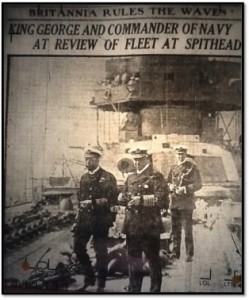The week after war was declared, there was a rising suspicion that there would soon be a large naval battle. Britain was the leading naval power in the world, and some believed that she could bring a quick end to the war if she could engage Germany in a naval battle. When all of the Canadian Atlantic ports, including Montreal, closed at the same time that the British ports closed, predictions of a naval battle became all the more persistent. Contributing to this suspicion was the fact that two Canadian Ships, the steamships Margaret and Canada, were being transferred to the naval service. Many other ships had also been placed on active service. There was no report of any action on the water though, and officials remained adamant that the port closures were carried out as a precaution. German cruisers were in the Atlantic and once they were removed ports would be opened again. Despite these assurances, predictions of a naval battle continued throughout August.
(“Would Join Force,” Berlin Daily Telegraph, 11 August 1914; “What A Spoil,” Elmira Signet, 20 August 1914, “Now in Navy,” Hespeler Herald, 13 August 1914; Photo Origin: London Advertiser, 3 August 1914.)
